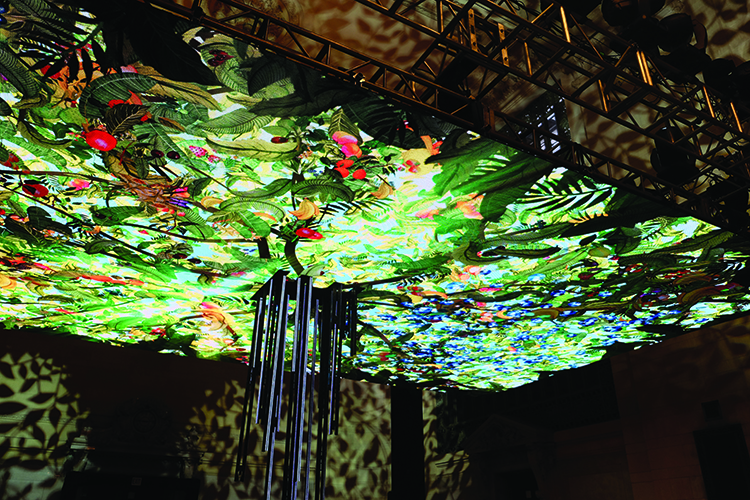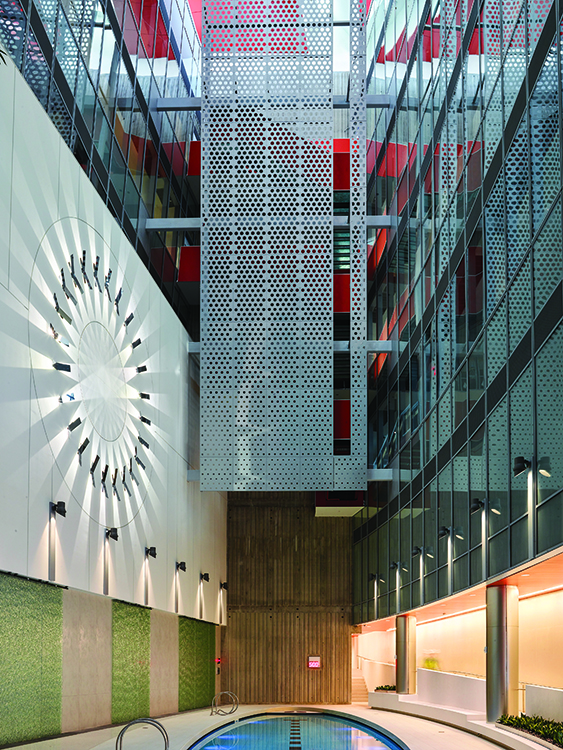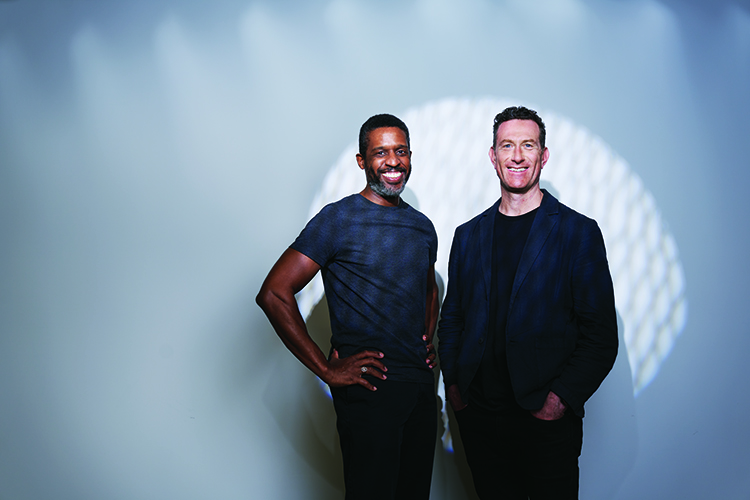With HUSH, David Schwarz ’99 is transforming shared spaces in a post-pandemic world.
After a year in which more than half of all Americans were working remotely to protect themselves from COVID-19, one of the questions companies large and small are facing is when to return to the office — and whether it still makes sense to do so. With tech CEOs like Jack Dorsey of Twitter and Mark Zuckerberg of Facebook announcing employees can work from home forever, it seems possible that some hybrid of remote and in-office working might become the norm.
For an experience design firm like HUSH, the question is even more pressing because creating interactive physical spaces for humans to work, explore, and learn is the company’s bread and butter. As millions of Americans receive vaccinations, HUSH employees are investigating how to design environments that people will want to come back to.
“This idea of connecting people is really about building trust between humans,” says Karl Stewart ’91, talent and people manager at HUSH. “I think that’s the piece we’re trying to solve. The companies that figure out how to do hybridization in a successful way will build that human trust.”

Founded in 2006 by David Schwarz ’99 and Erik Karasyk, the firm’s goal from the start has been to create engaging sensorial experiences through a combination of design, technology, and architecture. They’ve worked with companies ranging from Nike to Uber on projects that take anywhere from three months to three years.
HUSH’s quickest turnaround to date has been for the yogurt company Chobani. The single day “Giving Tree” installation in New York’s Grand Central Station celebrated Chobani’s 10th anniversary with an architectural-scale interactive installation. Viewers could plant a virtual seed and watch it grow, and for every “seed” planted, Chobani donated a case of yogurt to No Child Hungry.
For Schwarz, it’s the longer-term projects that feel most satisfying. One such undertaking was the Energy Wheel created for biotechnology company United Therapeutics. The clock-like sculpture dominates the company’s atrium and reflects the amount of energy being produced and used by the building and its employees in real time, because the building runs entirely on solar and geothermal power.
“We were asked to show employees the power of energy and sustainability as a part of their mission statement,” Schwarz says. “We created this iconic visualization that they sit next to every day. It’s a real-time data visualization that comes in from the energy of the building. It’s actually sharing whether [the building] is making energy or using it.”

Photo by Nicholas Scope
As the HUSH team envisions future assignments, they’ve been thinking about how to create both work and retail spaces that invite people to feel inspired and connected. Maybe the future of workspaces will house monthly team meetings on a campus that’s designed specifically for their interactive and informational needs, whether that’s an engineering or creative team. If there are employees who choose not to participate in on-site meetings, HUSH will work to create new types of IRL/virtual technological experiences to form better connections. For a soon-to-launch project with Facebook, Schwarz’s firm created a hybrid experience for employees and key guests. By simultaneously collecting ideas and information from participants in both virtual locations as well as on-site at their New York campus, they were able to design an experience that encourages active participation and interaction across time and space.
As for HUSH’s own workspace, which was redesigned just a year before the pandemic, Schwarz was surprised how invigorating it felt to spend a little time at the office once it was safe to do so.
“Even being there for a few minutes, I could feel how the space resonates with the frequency of being in an optimal state of creativity,” he says. “It’s so different than my house or any third space you might imagine.”
That level of connectivity is exactly what HUSH hopes to deliver — just as soon as everyone’s back to work.

